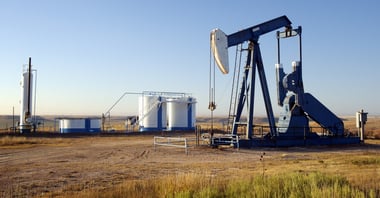Despite marijuana’s status as an illicit substance at the federal level, over half of U.S. states have made it legal for medicinal and/or recreational use. The legal cannabis industry has seen incredible growth in recent years, and this trend is likely to continue as more states jump on the bandwagon.
Although the growth of the cannabis industry has provided what seems like limitless opportunity for many people, it also brings with it a number of hazards that can’t be overlooked, including gas hazards. The good news is that many of these gas hazards are similar to established industries, so the cannabis industry can rely on an enormous pool of resources.
The concern, however, is that most people in the industry are unaware of these hazards. Gas hazards are a common oversight, and many of these newly-sprouted cannabis companies could benefit from gas detection training and monitoring.
Worker Safety is a Concern
A study from 2018 explored hazards in the cannabis industry and their effects on workers, showing that there's room for improvement when it comes to worker safety. The study concluded that a surprising 46 percent of industry workers did not receive training on the potential chemical, physical, and biological hazards they could encounter on the job.
With the door wide open for competition, many in the industry invested their focus on their products and their businesses, and safety took a back seat. It took some time for the focus to shift to compliance and safety, and there's still work to be done in both regards.
The high number of workers who received little to no safety training should be concerning to both employees and employers. Workers in the cannabis industry should be asking why they’ve never been trained on safety hazards, as well as what can be done to ensure their safety moving forward. On the other hand, employers must take steps to ensure workers are safe and every aspect of their business is compliant with industry regulations.
Gas Hazards for the Cannabis Industry
As the number of marijuana grow operations continues to rise, so too will the number of gas-related incidents. The two most common gas hazards are combustible gases, which can lead to fires and explosions, and carbon dioxide (CO2), which displaces oxygen and can cause asphyxiation.
Combustible gases can ignite under the right conditions, which are easy to create with the heat required for marijuana growth. Many operations use grow lights because they emit a large amount of heat, creating the perfect storm for combustible gases to ignite.
It's also common for businesses to enrich plants with carbon dioxide to improve plant growth. This is usually accomplished with a CO2 generator or cylinders containing liquefied compressed gas.
Cannabis businesses may also use gas-powered equipment, which, if not handled properly, could emit carbon monoxide and pose a hazard for workers.
The Benefits of Gas Monitoring
Cannabis grow operations should use a combination of area monitors and personal gas monitors. No two operations are the same, so gas monitors must be deployed in a manner that best suits each location.
Area monitors should be placed around the facility to detect gas leaks or provide a buffer or safe zone between hazardous areas and workers. In an ideal situation, an area gas monitor will detect a leak and alert a worker through visual and auditory alarms before a worker enters the area and comes in contact with the gas hazard. This system would be supported by personal gas monitors to alert workers to hazards as they move through the facility. Portable gas monitors should be used by any worker likely to encounter CO2 or other dangerous gases.
These monitors can prevent accidents and save lives if you use them properly and train all employees on what to do in an emergency.
Contact us to learn more about the gas hazards your people are facing and to find the right gas detection program for your business.



